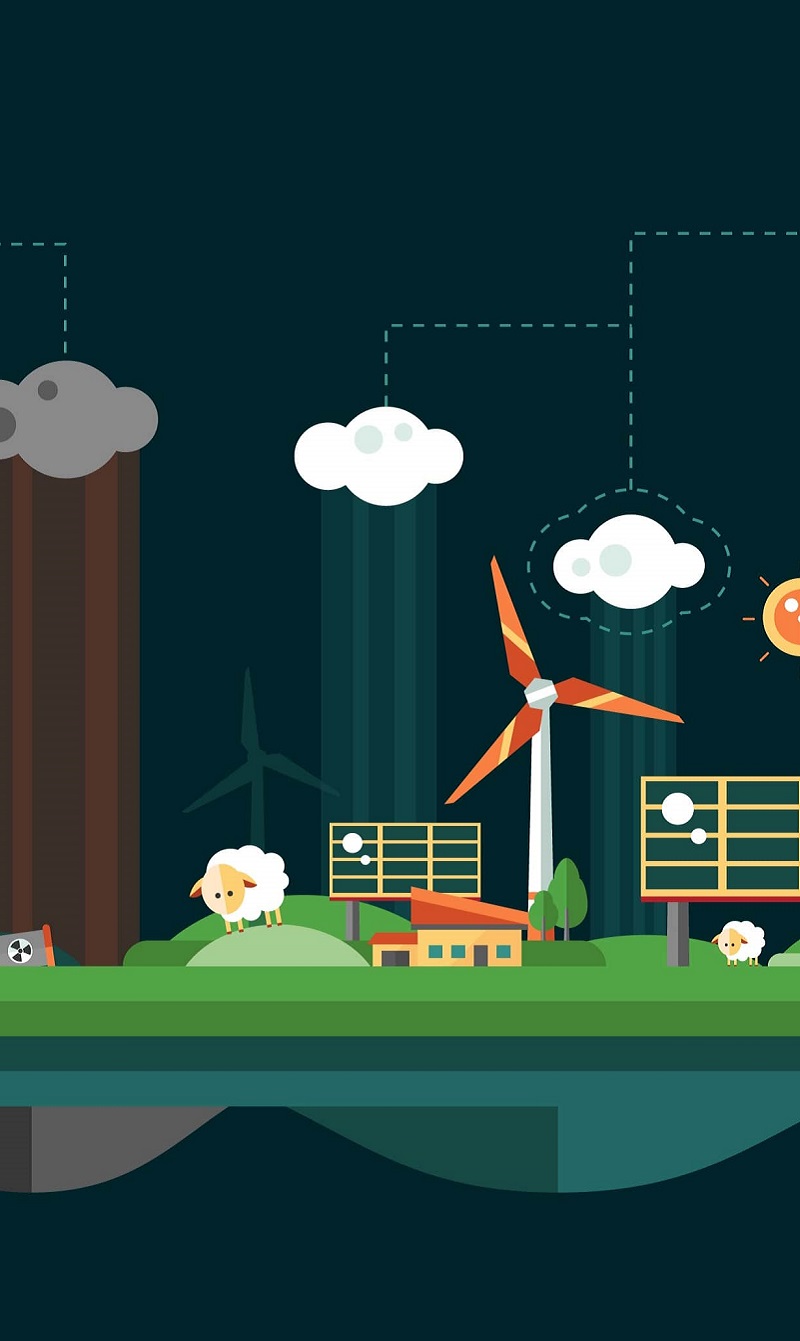Shedding light onto circular economy
EU ambassador to Malaysia, H.E. Maria Castillo Fernandez, sheds light on how circular economy and its adoption in Europe as well as in Asia can be fruitful for long term growth. This is part two of the interview – read part one here.
‘In Asia, the manufacturing centre of the world, the opportunity for circular economy is massive,’ says H.E. Maria Castillo Fernandez, EU ambassador to Malaysia. ‘In my opinion, it’s more important to understand that the full potential of the circular economy can only be truly reached when circular economy solutions are implemented at a regional and global scale, across all value chains.’
Mrs Fernandez gives examples such as the recent European Strategy for Plastics that includes a global call to action to tackle the issue of plastic litter. It aims to harness global action through stronger engagement in international fora, enhance support to projects in East as well as Southeast Asia and strengthen policy dialogue with countries outside Europe.
When asked if Asia may face the same challenges that the EU did when adopting the circular economy, Mrs Fernandez replies, ‘Yes, to a certain extent the challenges in Asia will be similar to that of Europe. Like the EU, Asia is composed of countries with differing levels of development and capacity. In Asia, I believe, you’ll have the added challenge of securing the buy-in of consumers whose perception of a circular economy is perhaps at a more preliminary stage.’

Furthermore, Mrs Fernandez explains, approximately 70 per cent of Southeast Asia’s population live in coastal areas and depend on the oceans for revenue. ‘The million tonnes of plastic litter are ending up in the oceans every year. This affects not only the marine life negatively but also human health and the economic activities such as fisheries and tourism,’ she says.
Inevitably, the growing of Asian economies will increase the use of plastics. ‘Plastics production in Asia in 2013 accounted for 45.6 per cent of global plastics and because 80 per cent of marine pollution comes from land-based activities it’s crucial to manage properly the increased production as well as consumption of plastics,’ adds Mrs Fernandez.
Mrs Fernandez, an advocate of circular economy, answers a few more questions below.
What are the economic incentives of circular economy for Europe?
Economic instruments are used to varying degrees for waste management across Europe but they’re not used systematically or to their full potential everywhere. Some regions or countries have taxes on landfilling and incineration which aim to discourage these practices. Others make use of Pay-As-You-Throw (PAYT) schemes to reduce the generation of waste. There are also deposit-refund systems which increase collection rates of specific products. Extended Producer Responsibility (EPR) schemes monetise the environmental impact of a product at the end of its life and this cost is added to the product’s price when it is purchased.
There are also other types of rewards for citizens who choose to make environmentally-friendly purchases such as eco-cheques or rebates for energy-efficient appliances. For instance, the introduction of PAYT schemes in parts of Italy has led to a clear decrease in the amount of waste and increase of recyclable and compostable waste material. The scheme has delivered results both in small towns and large cities. France has EPR schemes for different product types such as electrical or electronic waste, packaging, furniture and paper. This means it integrates a fee, which covers the cost of disposing of a product, into the purchase price paid by the user.
However, there’s still a potential for improving incentives and the EU is exploring different options: The economic incentives mentioned above are primarily set up and used by member states, not the EU. The EU is aiming to not only enable member states to retain flexibility over these tools, but also to help regulate them across all EU countries. This will help smaller member states who don’t have the capacity or resources to design these sorts of tools themselves.
Better results can also be achieved if a more harmonised single market is introduced. For example, if a landfill tax rate is too low, it won’t encourage initiatives that try to increase the level of waste that gets collected separately. Likewise, if producer responsibility schemes don’t cover the full cost of proper collection, treatment or recycling, municipalities won’t be able to set up the full infrastructure themselves. The EU can help by setting the right framework conditions for these economic instruments to operate successfully and that’s what we’re aiming for.
And for Asia?
While the EU’s practices can serve as a good example for other regions in the world, some Asian countries have already developed their own economic incentives. For example, the Ministry of Environment and Forestry of Indonesia promotes Waste Banks as the new strategic programme to give incentive to people to separate domestic waste and increase their income.
[Waste] Bank customers bring all non-organic waste to the banks where it’s treated like a deposit. The deposit is weighed and given a monetary value based on rates set by waste collectors. The Waste Banks sell the deposited material to mobile agents for reuse or recycling. Thus, the waste deposits are transformed into money.
Can circular economy create jobs?
At the European level, job creation potential of a circular economy runs into the hundreds of thousands for Europe. The Plastics Strategy includes, for instance, the objective of creating on its own 200,000 jobs in the plastics sorting and recycling industry. Furthermore, it has been estimated that the full implementation of the recently adopted waste legislation will deliver at least more than 100,000 jobs by 2035 in the waste sector.
The number of jobs created in sectors related to the circular economy (recycling and repair) is one of the 10 indicators included in the Monitoring Framework for the Circular Economy we published last January. Based on it, the EU had close to four million workers in circular economy-related jobs in 2014.
In general, opportunities exist in all sectors embracing the circular economy – from waste management such as collection, sorting, treatment and disposal control to innovating design for packaging, energy saving, green building material and water treatment – and the list goes on.
Even here in Malaysia, I can see that the concept of green energy has gripped the business community and is fast becoming the order of the day. There are other additional jobs in all sectors that have a circular component such as engineers designing more durable products, plant managers crafting more resource-efficient manufacturing processes and more.
What opportunities can a circular economy offer Europe in the next decade?
The circular economy brings major economic benefits, contributing to innovation, growth and job creation. It’ll retain the value of the resources we use in products, returning them into the product cycle at the end of their use. New jobs will be created in innovative design and business models, research, recycling, re-manufacturing and product development.
It’s anticipated that the circular economy will generate savings of EUR600 billion for EU businesses, equivalent to eight per cent of their annual turnover while reducing EU carbon emissions by 450 million tonnes by 2030. Job creation, benefits for EU businesses, reduced carbon emissions: the circular economy, in other words, is a win-win opportunity to protect our planet and natural resources while creating economic and social benefits for our citizens.
The global outlook for circular economy
‘Already we’re seeing the uptake of the circular economy concept in other parts of the world. Lower income countries are in many ways more “circular” than their developed economy counterparts – much economic activity in lower income countries revolve around sorting and reusing waste,’ says Mrs Fernandez. ‘However, higher-value, employment-generating opportunities for reuse and remanufacturing are yet to be captured. The challenge lies in how to turn this into a development opportunity.’
The existence of circular activities in developing countries provides excellent political ‘entry points’. ‘This enables governments, the private sector, civil society and other actors to promote innovative economic models that help build momentum around a set of ideas that can be applied in and tailored to multiple sectors or cities,’ Mrs Fernandez explains. ‘There’s a window of opportunity in which to align the efforts of development organisations and partner countries. Donors are exploring how the agenda should be aligned with the Sustainable Development Goals (SDGs) and the Paris Climate Agreement. Wider international cooperation on circular economy can involve trade partnerships, regional hubs or pilot zones.’
Mrs Fernandez reminds us the need to explore how circular approaches can unlock new opportunities for industrialisation and accelerate efforts to create solutions to other critical development challenges, such as the expansion of access to energy. ‘One of the ways how the European Commission is engaging with developing countries is through the Circular Economy Mission,’ she says. One of the goals of the Circular Economy Mission is promoting sustainable and resource-efficient policies, engaging NGOs, local companies and other relevant stakeholders in developing countries.
‘It’s a great opportunity to not only strengthen policy dialogue but also to bring innovative green businesses from both sides together. On our side, the EU will continue to share its expertise in circularity with international partners. At the same time, we think such strengthened cooperation with partner countries will be of great benefit to Europe as well,’ Mrs Fernandez concludes.
___________________
*Read part one of the interview with H.E. Maria Castillo Fernandez on how Europe adopts circular economy.
Photo Credit: Nadine Shaabana





